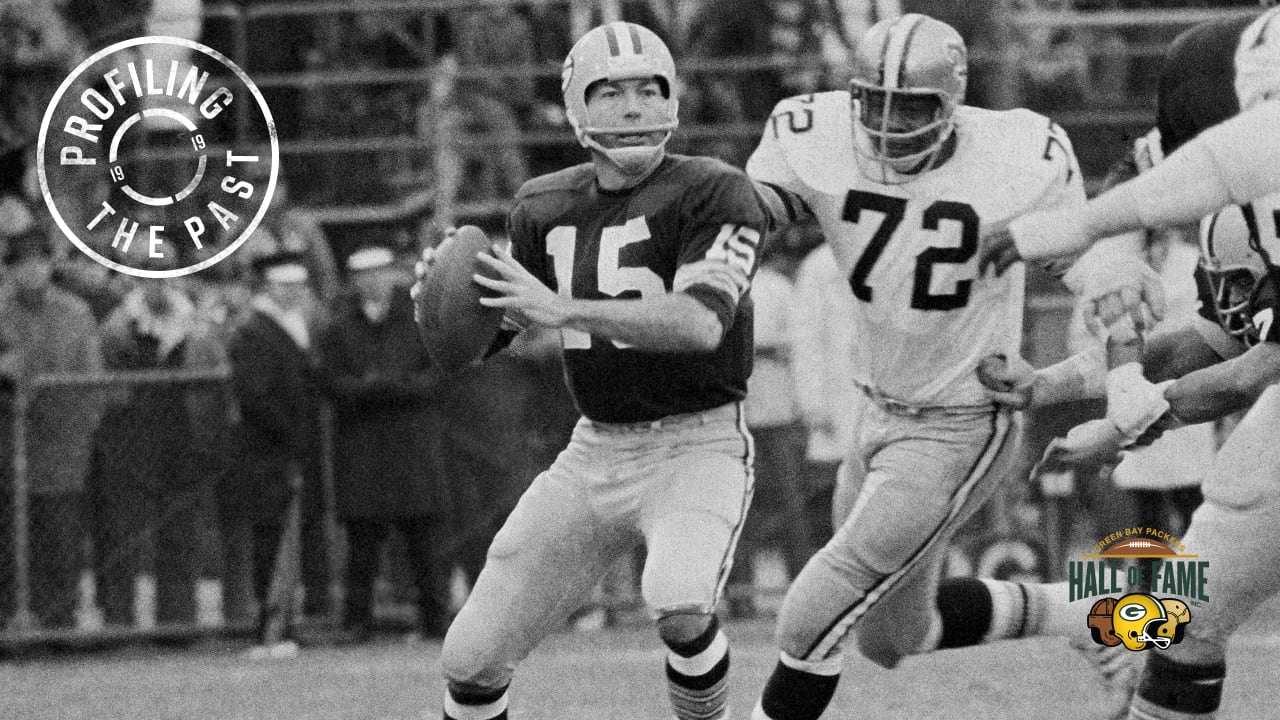Cheesehead
Well-known member
- Mar 19, 2019
- 2,854
- 0

Lombardi, who once predicted Unitas, Starr’s contemporary and rival, would “go down in the records as the greatest quarterback of all time,” took exception when the Baltimore Colts legend was named Quarterback of the Decade for the 1960s. “Johnny Unitas has been a great, great, great quarterback,” Lombardi said in February 1970, only months before his death. “But Starr did the winning in the 1960s. And that is the object – to win.”
On Oct. 18, 1970, he was honored at Lambeau Field with Bart Starr Day. On Nov. 11, 1973, the Packers retired Starr’s No. 15 in another ceremony at Lambeau Field.
In 1977, Starr was inducted into the Pro Football Hall of Fame.
“Bart was rarely the best quarterback in the league on a statistical basis,” said Kramer. “But for three hours each Sunday, he was – almost always – the best quarterback in the game in which he was playing.”
The Packers unearthed Starr in the 17th round of the 1956 draft. After starting as a sophomore and being called “the best passer” in University of Alabama history by his coach, Harold Drew, Starr was troubled by a back injury throughout his junior season. Then as a senior, he was miscast in a run-oriented offense and benched by a new coach who won four of 30 games and was fired after three seasons.
What prompted the Packers to take a flyer on Starr was a recommendation from Johnny Dee, the Crimson Tide’s successful basketball coach.
As a rookie, Starr made an immediate impression on Packers coach Lisle Blackbourn and wound up serving as Tobin Rote’s backup. While Starr played sparingly that year, he made his first NFL start on Nov. 18, 1956, in the Packers’ final game at old City Stadium.
When the season ended, Starr was called to active duty with the Air Force, only to be discharged in early May due to his lingering back problems. In 1957 and ’58, Starr shared quarterback duties with Babe Parilli.
In 1959, Lombardi took over as coach, acquired veteran Lamar McHan in a trade and installed him as the starter for the first seven games. At one point, Joe Francis was the No. 2 quarterback and Starr was third-string.
But after McHan suffered a leg injury in the seventh game, Starr started the final five and the Packers finished 4-1 for their first winning record in 12 years. Starr started the opener in 1960, but played poorly in a loss to the Bears and McHan took over again.
Although the Packers won the next four games with McHan as their starter, Lombardi finally decided to bank his future on Starr, a more stable leader. On Nov. 6, 1960, Starr was reinserted as the starting quarterback and held the job until injuries took their toll late in his career.
Through 1967, in games that Starr started under Lombardi, the Packers went 73-21-4 in the regular season and 9-1 in the postseason.
Starr also was extremely durable during the Lombardi years. His most serious injuries were a hairline fracture on the back of his right hand, which cost him four starts in 1963, and a shoulder issue that cost him two starts in 1967.
Thereafter, the injuries mounted.
In 1968, Starr tore a bicep and missed 28 quarters. The next year, he missed 27 with an elbow injury. In 1970, he missed 16 quarters with shoulder and rib problems. In 1971, his final season, Starr threw only 45 passes.
In all, Starr played 16 seasons with the Packers and shares the club record for service as an active player. In 196 regular-season games, Starr passed for 24,718 yards and finished with a passer rating of 80.5.
Starr served as quarterback coach of the Packers in 1972. He was their head coach and general manager from 1975 to 1980, and head coach only from 1981 to 1983. His record over those nine seasons was 52-76-3. From 1973 to 1974, Starr worked as a CBS television analyst on NFL games.
Born Jan. 9, 1934, in Montgomery, Ala. Given name Bryan Bartlett Starr.
